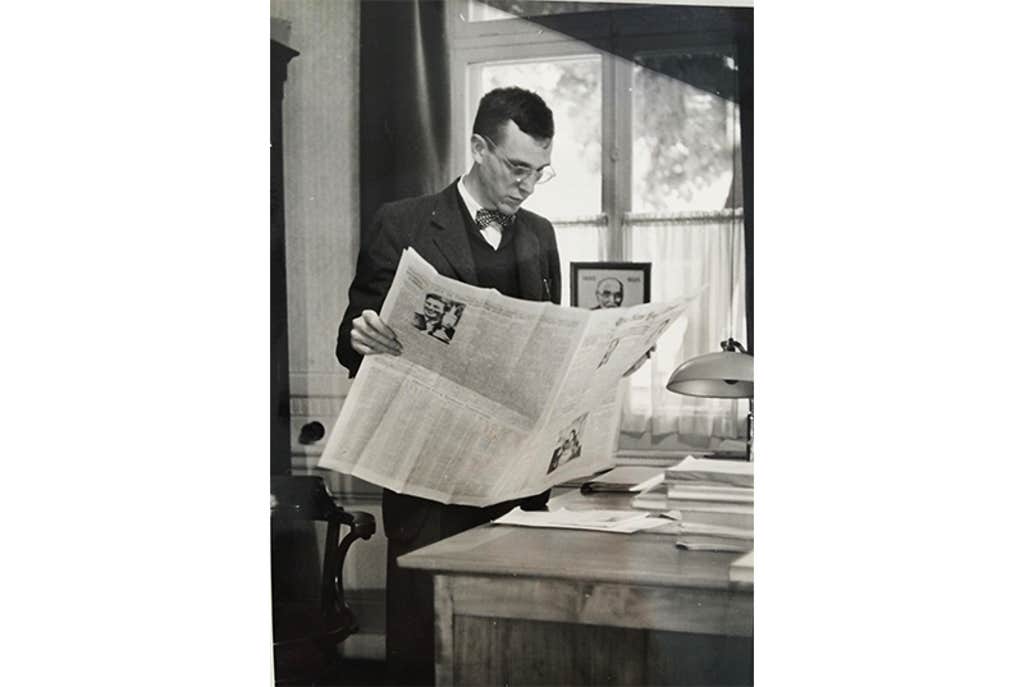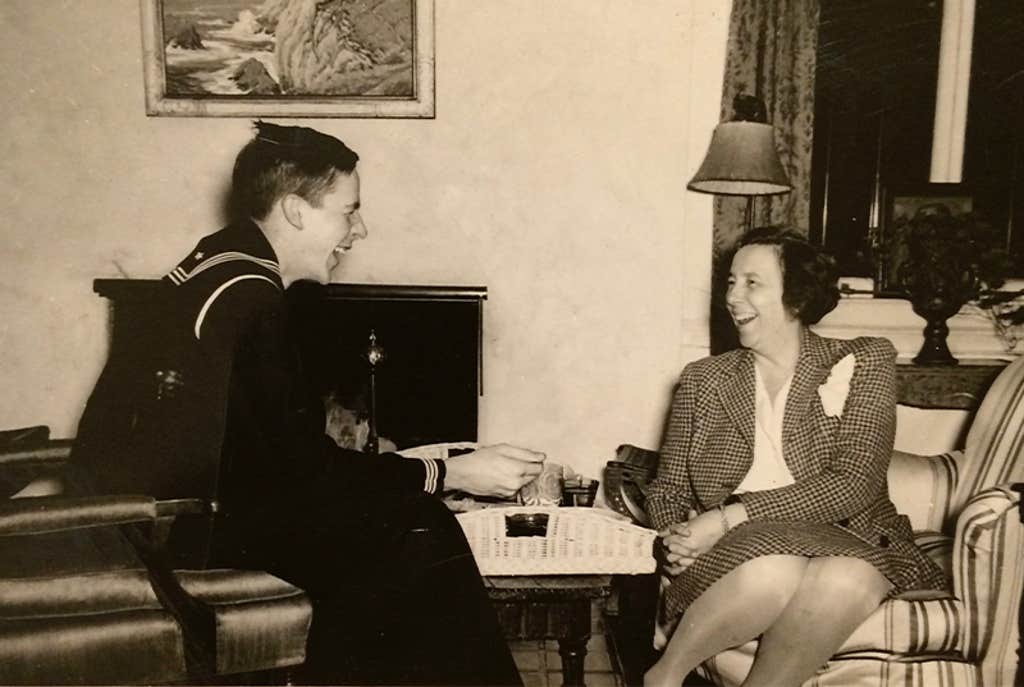The neighborhood was quiet. There was a chill in the air. The scent of Spanish moss hung from the cypress trees. Plumes of white smoke rose from the burning cane fields and stretched across the skies of Terrebonne Parish. The man swung a long leg over a bicycle frame and pedaled off down the street.
It was 1987 in Houma, Louisiana, and he was headed to the Department of Transportation, where he was working the night shift, sweeping floors and cleaning toilets. He was just picking up speed when a car came barreling toward him with a drunken swerve.
A screech shot down the corridor of East Main Street, echoed through the vacant lots, and rang out over the Bayou.
Then silence.
ADVERTISEMENT
Nautilus Members enjoy an ad-free experience.
Log in
or
Join now
.
The 60-year-old man lying on the street, as far as anyone knew, was just a janitor hit by a drunk driver. There was no mention of it on the local news, no obituary in the morning paper. His name might have been Anonymous. But it wasn’t.
How could this genius just vanish into obscurity?
His name was Peter Putnam. He was a physicist who’d hung out with Albert Einstein, John Archibald Wheeler, and Niels Bohr, and two blocks from the crash, in his run-down apartment, where his partner, Claude, was startled by a screech, were thousands of typed pages containing a groundbreaking new theory of the mind.
“Only two or three times in my life have I met thinkers with insights so far reaching, a breadth of vision so great, and a mind so keen as Putnam’s,” Wheeler said in 1991. And Wheeler, who coined the terms “black hole” and “wormhole,” had worked alongside some of the greatest minds in science.
ADVERTISEMENT
Nautilus Members enjoy an ad-free experience.
Log in
or
Join now
.
Robert Works Fuller, a physicist and former president of Oberlin College, who worked closely with Putnam in the 1960s, told me in 2012, “Putnam really should be regarded as one of the great philosophers of the 20th century. Yet he’s completely unknown.”
That word—unknown—it came to haunt me as I spent the next 12 years trying to find out why.

The American Philosophical Society Library in Philadelphia, with its marbled floors and chandeliered ceilings, is home to millions of rare books and manuscripts, including John Wheeler’s notebooks. I was there in 2012, fresh off writing a physics book that had left me with nagging questions about the strange relationship between observer and observed. Physics seemed to suggest that observers play some role in the nature of reality, yet who or what an observer is remained a stubborn mystery.
ADVERTISEMENT
Nautilus Members enjoy an ad-free experience.
Log in
or
Join now
.
Wheeler, who made key contributions to nuclear physics, general relativity, and quantum gravity, had thought more about the observer’s role in the universe than anyone—if there was a clue to that mystery anywhere, I was convinced it was somewhere in his papers. That’s when I turned over a mylar overhead, the kind people used to lay on projectors, with the titles of two talks, as if given back-to-back at the same unnamed event:
Wheeler: From Reality to Consciousness
Putnam: From Consciousness to Reality
Putnam, it seemed, had been one of Wheeler’s students, whose opinion Wheeler held in exceptionally high regard. That was odd, because Wheeler’s students were known for becoming physics superstars, earning fame, prestige, and Nobel Prizes: Richard Feynman, Hugh Everett, and Kip Thorne.
ADVERTISEMENT
Nautilus Members enjoy an ad-free experience.
Log in
or
Join now
.
Back home, a Google search yielded images of a very muscly, very orange man wearing a very small speedo. This, it turned out, was the wrong Peter Putnam. Eventually, I stumbled on a 1991 article in the Princeton Alumni Weekly newsletter called “Brilliant Enigma.” “Except for the barest outline,” the article read, “Putnam’s life is ‘veiled,’ in the words of Putnam’s lifelong friend and mentor, John Archibald Wheeler.”

A quick search of old newspaper archives turned up an intriguing article from the Associated Press, published six years after Putnam’s death. “Peter Putnam lived in a remote bayou town in Louisiana, worked as a night watchman on a swing bridge [and] wrote philosophical essays,” the article said. “He also tripled the family fortune to about $40 million by investing successfully in risky stock ventures.”
The questions kept piling up. Forty million dollars?
ADVERTISEMENT
Nautilus Members enjoy an ad-free experience.
Log in
or
Join now
.
I searched a while longer for any more information but came up empty-handed. But I couldn’t forget about Peter Putnam. His name played like a song stuck in my head. I decided to track down anyone who might have known him.
The only paper Putnam ever published was co-authored with Robert Fuller, so I flew from my home in Cambridge, Massachusetts, to Berkeley, California, to meet him. Fuller was nearing 80 years old but had an imposing presence and a booming voice. He sat across from me in his sun-drenched living room, seeming thrilled to talk about Putnam yet plagued by some palpable regret.
Putnam had developed a theory of the brain that “ranged over the whole of philosophy, from ethics to methodology to mathematical foundations to metaphysics,” Fuller told me. He compared Putnam’s work to Alan Turing’s and Kurt Gödel’s. “Turing, Gödel, and Putnam—they’re three peas in a pod,” Fuller said. “But one of them isn’t recognized.”
Fuller led me to Barry Spinello, a filmmaker in Bakersfield, California, who met Putnam at the Apollo Theater in Harlem in 1963. Cannonball Adderley was wailing on the sax. “I turned around and saw this guy doing a ridiculous dance,” Spinello said—half jive, half seizure. Putnam was tall and thin like an overgrown twig, flailing like he might tie himself into a knot. They got to talking, and Spinello found Putnam so fascinating that, 10 years later, he traveled to Louisiana to record a week’s worth of conversations about his work.
ADVERTISEMENT
Nautilus Members enjoy an ad-free experience.
Log in
or
Join now
.
For nights on end, on a cot in Spinello’s studio, I slept to the clicks and hums of an achy reel-to-reel machine, as it fed 35 hours of audio into my digital recorder. I listened to one of the recordings in my headphones on the plane ride back, flinching when Putnam’s voice broke through the static. Suddenly he became a real person, a person with vocal cords. He sounded like Jimmy Stewart with a stutter. “Sometimes I think it would’ve worked with Wheeler,” he was saying, “but it just …” Then he went silent.
Spinello gave me an email address for Coleman Clarke, who had met Putnam in New York City in the 1960s while Clarke was doing his Ph.D. at Columbia University. “It’s mind blowing to me that you found Putnam in Wheeler’s journals,” Clarke wrote in reply, as if I’d won a scavenger hunt that everyone else had quit playing decades ago.

Clarke seemed relieved that someone had finally come around asking about Putnam, eager to tell me about this extraordinary man who had slipped through the cracks of history. “He was a genius,” Clarke said. “Every talk with him had this level of significance that was just orders of magnitude higher up than a normal conversation with a normal human being.”
ADVERTISEMENT
Nautilus Members enjoy an ad-free experience.
Log in
or
Join now
.
One person led to another. Gary Aston-Jones, head of the Brain Health Institute at Rutgers University, told me he was inspired by Putnam to go into neuroscience after Clarke gave him one of Putnam’s papers.
“Putnam’s nervous system model presaged by decades stuff that’s very cutting edge in neuroscience,” Aston-Jones said, and yet, “in the field of neuroscience, I don’t know anybody that’s ever heard of him.”
Phillips Jones, a physicist who worked alongside Putnam in the early 1960s, told me over the phone, “We got the sense that what Einstein’s general theory was for physics, Peter’s model would be for the mind.”
Even Einstein himself was impressed with Putnam. At 19 years old, Putnam went to Einstein’s house to talk with him about Arthur Stanley Eddington, the British astrophysicist. (Eddington performed the key experiment that proved Einstein’s theory of gravity.) Putnam was obsessed with an allegory by Eddington about a fisherman and wanted to ask Einstein about it. Putnam also wanted Einstein to give a speech promoting world government to a political group he’d organized. Einstein—who was asked by plenty of people to do plenty of things—thought highly enough of Putnam to agree.
ADVERTISEMENT
Nautilus Members enjoy an ad-free experience.
Log in
or
Join now
.
How could this genius, this Einstein of the mind, just vanish into obscurity? When I asked why, if Putnam was so important, no one has ever heard of him, everyone gave me the same answer: because he didn’t publish his work, and even if he had, no one would have understood it.
“He spoke and wrote in ‘Putnamese,’ ” Fuller said. “If you can find his papers, I think you’ll immediately see what I mean.”

In a January freeze in 2013, I headed to Rochester, New York, to meet Clarke. He was in his late 70s but looked younger—tall and slim with gray hair and a bounce in his step. “I’m just so excited that you’ve found Putnam,” he said warmly. It sounded like, what took you so long? He told me he had some of Putnam’s papers in storage.
ADVERTISEMENT
Nautilus Members enjoy an ad-free experience.
Log in
or
Join now
.
We drove to a nondescript brick building. I followed him down a cold, white hallway until he stopped in front of one of the units. He turned the key and lifted the massive door.
You have to understand what I was expecting. I thought we were going to his storage unit, that it would be filled with whatever storage units are filled with—old clothes and rusty bikes, mismatched chairs and unused exercise equipment. Then somewhere, beneath a pile of something, in a dusty cardboard box, a few of Putnam’s papers.
That’s not what this was.
As the door rolled up, I caught a glimpse of what lay behind.
ADVERTISEMENT
Nautilus Members enjoy an ad-free experience.
Log in
or
Join now
.
“This is all Putnam?” I whispered.
Clarke nodded. “I’ve never shown anyone before you.”
Putnam’s remarkable claim was that simply by playing this game, the system will learn.
There were no old clothes. No mismatched chairs. Only filing cabinets. Rows of filing cabinets, all neatly labeled, giving the whole place the appearance of a professional archive. I looked around, stunned. It was the entire library of Putnam’s unpublished writings. His theory, his life. The whole long-lost thing.
ADVERTISEMENT
Nautilus Members enjoy an ad-free experience.
Log in
or
Join now
.
When Clarke first heard that Putnam had been killed, he made frantic phone calls to the Putnam family lawyer to find out what was happening with Peter’s papers. The answer seemed to be nothing—they’d been moved from Houma to a Cleveland warehouse and might have been thrown away. Clarke rushed to Ohio, loaded them onto a truck, and drove them to his home in Utah for safe keeping; when he moved to Rochester, the archive moved with him.
Now he dug through drawers, handing me papers and folders until I was holding a stack so large I nearly toppled over. Typed manuscripts at hundreds of pages apiece; binders full of notes and letters; handwritten journals; accordion folders bursting with photos, telegrams, and postcards—we piled as much as we could into the trunk of my rental car and I drove back to my hotel.
It’s one thing to read through curated papers at a place like the American Philosophical Society, with pages gingerly propped on foam wedges under the watchful eyes of librarians. It’s another to flop down on a white bedspread in a Courtyard Marriott and hold a man’s unprocessed life, alone. You turn it over in your hands, still covered in his pencil marks, smudged with his fingerprints; an envelope singed in the spiral shape of his stove ring, yellowed glue clutching his pet bird’s tattered feather, a letter torn apart seemingly in anger and taped back together in remorse. Suddenly you’re implicated. You’ve disturbed a sleeping thing.
Skimming through the papers I saw that the people I’d spoken to hadn’t been kidding about the Putnamese. “To bring the felt under mathematical categories involves building a type of mathematical framework within which latent colliding heuristics can be exhibited as of a common goal function,” I read, before dropping the paper with a sigh. Each one went on like that for hundreds of pages at a time, on none of which did he apparently bother to stop and explain what the whole thing was really about.
ADVERTISEMENT
Nautilus Members enjoy an ad-free experience.
Log in
or
Join now
.
There was no way I could read it all in a reasonable amount of time, so I spent the next week driving between my hotel and the storage unit. I’d stay up all night, photographing the items page by page, then head back to the storage unit, bleary-eyed in the daylight, to swap it all out for a new batch. I’d already photographed some 10,000 pages of material when Clarke grinned and confessed, “There’s a second storage unit.”

Back in my apartment in Cambridge, I began sorting through everything I’d found. Photographs, letters, transcripts, papers—I spread them on the kitchen table like pieces to a jigsaw puzzle. Gradually, Putnam’s life and the scope of his theory came into view.
He developed it over the course of three decades, starting as a teenager in the 1940s. He wrote constantly—in the Navy, when he was sent to the brig for reading poetry on duty; while earning his degrees at Princeton University, and after, teaching physics at the University of Massachusetts at Amherst in the 1950s and Columbia University in New York in the 1960s. He wrote while he was living in Fuller’s office at Barnard College with little more than a cot, a phonograph, and a hot plate, and when he moved into a basement apartment in upper Manhattan, just west of Harlem, his lanky form hunched over a typewriter between the grated window bars.
ADVERTISEMENT
Nautilus Members enjoy an ad-free experience.
Log in
or
Join now
.
Putnam spent most of his time alone, Fuller had told me. “Because of this isolation, he developed a way of expressing himself in which he uses words, phrases, concepts, in weird ways, peculiar to himself. The thing would be totally incomprehensible to anyone.”
I took the incomprehensibility as a test. I didn’t know why I was being tested. I only knew I wanted to pass. I was driven in part by the looks on everyone’s faces, a pain that appeared fresh despite the years. “My basic upset is, I feel somehow I failed to get his stuff out there,” Fuller said. Wheeler had felt the same. “I realize I didn’t do my duty by Peter,” he said after Putnam died.
Their regret was now my inheritance, a whisper that grew louder as the years pressed on. I might have walked away if I hadn’t been struck with the same feeling that had taken hold of everyone else: that Putnam was actually onto something. That he was quite possibly a genius. In the beginning, I was chasing Peter Putnam the fantasy, a forgotten janitor who’d discovered the structure of the mind. But the deeper I read, I found myself thinking, Wait, did a forgotten janitor seriously discover the structure of the mind?

ADVERTISEMENT
Nautilus Members enjoy an ad-free experience.
Log in
or
Join now
.
Imagine a fisherman who’s exploring the life of the ocean. He casts his net into the water, scoops up a bunch of fish, inspects his catch and shouts, “A-ha! I have made two great scientific discoveries. First, there are no fish smaller than two inches. Second, all fish have gills.”
The fisherman’s first “discovery” is clearly an error. It’s not that there are no fish smaller than two inches, it’s that the holes in his net are two inches in diameter. But the second discovery seems to be genuine—a fact about the fish, not the net.
This was the Eddington allegory that obsessed Putnam.
When physicists study the world, how can they tell which of their findings are features of the world and which are features of their net? How do we, as observers, disentangle the subjective aspects of our minds from the objective facts of the universe? Eddington suspected that one couldn’t know anything about the fish until one knew the structure of the net.
ADVERTISEMENT
Nautilus Members enjoy an ad-free experience.
Log in
or
Join now
.
That’s what Putnam set out to do: come up with a description of the net, a model of “the structure of thought,” as he put it in a 1948 diary entry.
At the time, scientists were abuzz with a new way of thinking about thinking. Alan Turing had worked out an abstract model of computation, which quickly led not only to the invention of physical computers but also to the idea that perhaps the brain, too, was a kind of Turing machine.
Putnam disagreed. “Man is a species of computer of fundamentally different genus than those she builds,” he wrote. It was a radical claim (not only for the mixed genders): He wasn’t saying that the mind isn’t a computer, he was saying it was an entirely different kind of computer.
A universal Turing machine is a powerful thing, capable of computing anything that can be computed by an algorithm. But Putnam saw that it had its limitations. A Turing machine, by design, performs deductive logic—logic where the answers to a problem are contained in its premises, where the rules of inference are pregiven, and information is never created, only shuffled around. Induction, on the other hand, is the process by which we come up with the premises and rules in the first place. “Could there be some indirect way to model or orient the induction process, as we do deductions?” Putnam asked.
ADVERTISEMENT
Nautilus Members enjoy an ad-free experience.
Log in
or
Join now
.
Whenever Putnam made a new friend, his mother warned him, “They’re probably using you for your money.”
Putnam laid out the dynamics of what he called a universal “general purpose heuristic”—which we might call an “induction machine,” or more to the point, a mind—borrowing from the mathematics of game theory, which was thick in the air at Princeton. His induction “game” was simple enough. He imagined a system (immersed in an environment) that could make one mutually exclusive “move” at a time. The system is composed of a massive number of units, each of which can switch between one of two states. They all act in parallel, switching, say, “on” and “off” in response to one another. Putnam imagined that these binary units could condition one another’s behavior, so if one caused another to turn on (or off) in the past, it would become more likely to do so in the future. To play the game, the rule is this: The first chain of binary units, linked together by conditioned reflexes, to form a self-reinforcing loop emits a move on behalf of the system.
Every game needs a goal. In a Turing machine, goals are imposed from the outside. For true induction, the process itself should create its own goals. And there was a key constraint: Putnam realized that the dynamics he had in mind would only work mathematically if the system had just one goal governing all its behavior.
That’s when it hit him: The goal is to repeat. Repetition isn’t a goal that has to be programmed in from the outside; it’s baked into the very nature of things—to exist from one moment to the next is to repeat your existence. “This goal function,” Putnam wrote, “appears pre-encoded in the nature of being itself.”
ADVERTISEMENT
Nautilus Members enjoy an ad-free experience.
Log in
or
Join now
.
So, here’s the game. The system starts out in a random mix of “on” and “off” states. Its goal is to repeat that state—to stay the same. But in each turn, a perturbation from the environment moves through the system, flipping states, and the system has to emit the right sequence of moves (by forming the right self-reinforcing loops) to alter the environment in such a way that it will perturb the system back to its original state.
Putnam’s remarkable claim was that simply by playing this game, the system will learn; its sequences of moves will become increasingly less random. It will create rules for how to behave in a given situation, then automatically root out logical contradictions among those rules, resolving them into better ones. And here’s the weird thing: It’s a game that can never be won. The system never exactly repeats. But in trying to, it does something better. It adapts. It innovates. It performs induction.

In paper after paper, Putnam attempted to show how his induction game plays out in the human brain, with motor behaviors serving as the mutually exclusive “moves” and neurons as the parallel binary units that link up into loops to move the body. The point wasn’t to give a realistic picture of how a messy, anatomical brain works any more than an abstract Turing machine describes the workings of an iMac. It was not a biochemical description, but a logical one—a “brain calculus,” Putnam called it.
ADVERTISEMENT
Nautilus Members enjoy an ad-free experience.
Log in
or
Join now
.
As the game is played, perturbations from outside—photons hitting the retina, hunger signals rising from the gut—require the brain to emit the right sequence of movements to return to its prior state. At first it has no idea what to do—each disturbance is a neural impulse moving through the brain in search of a pathway out, and it will take the first loop it can find. That’s why a newborn’s movements start out as random thrashes. But when those movements don’t satisfy the goal, the disturbance builds and spreads through the brain, feeling for new pathways, trying loop after loop, thrash after thrash, until it hits on one that does the trick.
When a successful move, discovered by sheer accident, quiets a perturbation, it gets wired into the brain as a behavioral rule. Once formed, applying the rule is a matter of deduction: The brain outputs the right move without having to try all the wrong ones first.
But the real magic happens when a contradiction arises, when two previously successful rules, called up in parallel, compete to move the body in mutually exclusive ways. A hungry baby, needing to find its mother’s breast, simultaneously fires up two loops, conditioned in from its history: “when hungry, turn to the left” and “when hungry, turn to the right.” Deductive logic grinds to a halt; the facilitation of either loop, neurally speaking, inhibits the other. Their horns lock. The neural activity has no viable pathway out. The brain can’t follow through with a wired-in plan—it has to create a new one.
How? By bringing in new variables that reshape the original loops into a new pathway, one that doesn’t negate either of the original rules, but clarifies which to use when. As the baby grows hungrier, activity spreads through the brain, searching its history for anything that can break the tie. If it can’t find it in the brain, it will automatically search the environment, thrash by thrash. The mathematics of game theory, Putnam said, guarantee that, since the original rules were in service of one and the same goal, an answer, logically speaking, can always be found.
ADVERTISEMENT
Nautilus Members enjoy an ad-free experience.
Log in
or
Join now
.
“Perhaps I have actually found a place in the world that wants me at last—as I am.”
In this case, the baby’s brain finds a key variable: When “turn left” worked, the neural signal created by the warmth of the mother’s breast against the baby’s left cheek got wired in with the behavior. When “turn right” worked, the right cheek was warm. That extra bit of sensory signal is enough to tip the scales. The brain has forged a new loop, a more general rule: “When hungry, turn in the direction of the warmer cheek.”
New universals lead to new motor sequences, which allow new interactions with the world, which dredge up new contradictions, which force new resolutions, and so on up the ladder of ever-more intelligent behavior.




